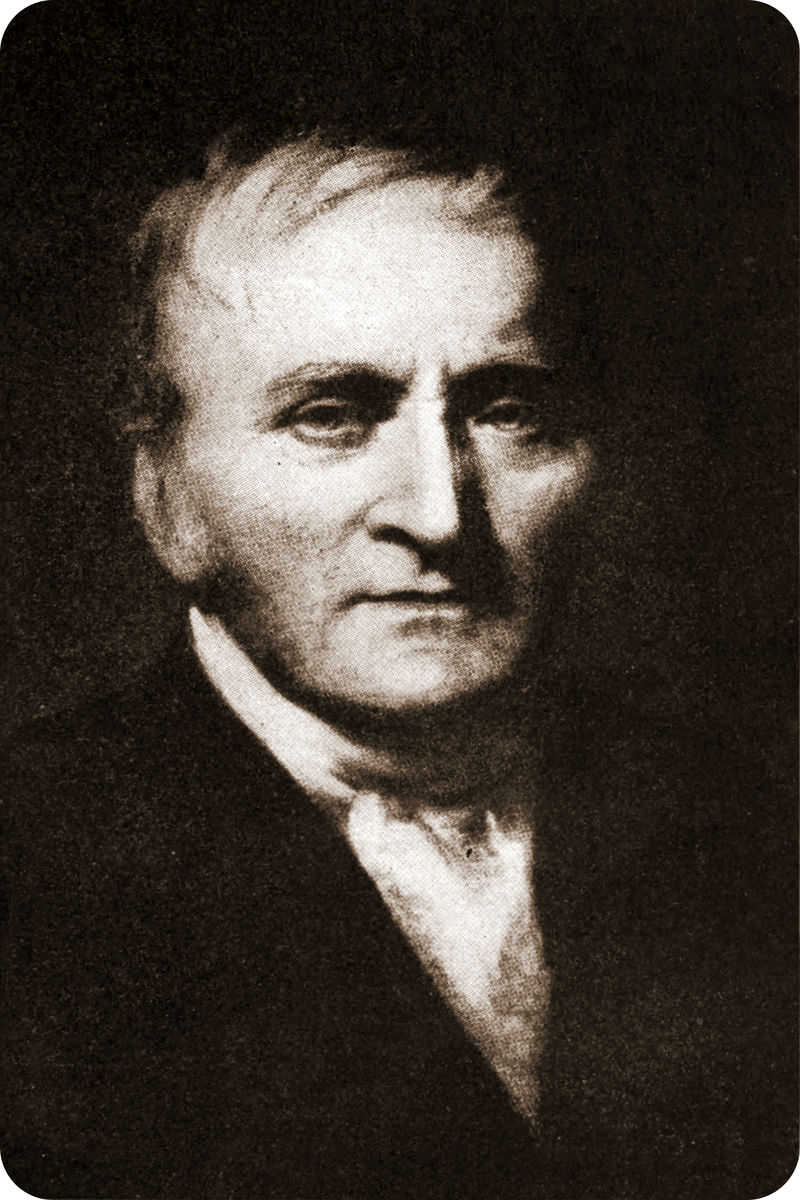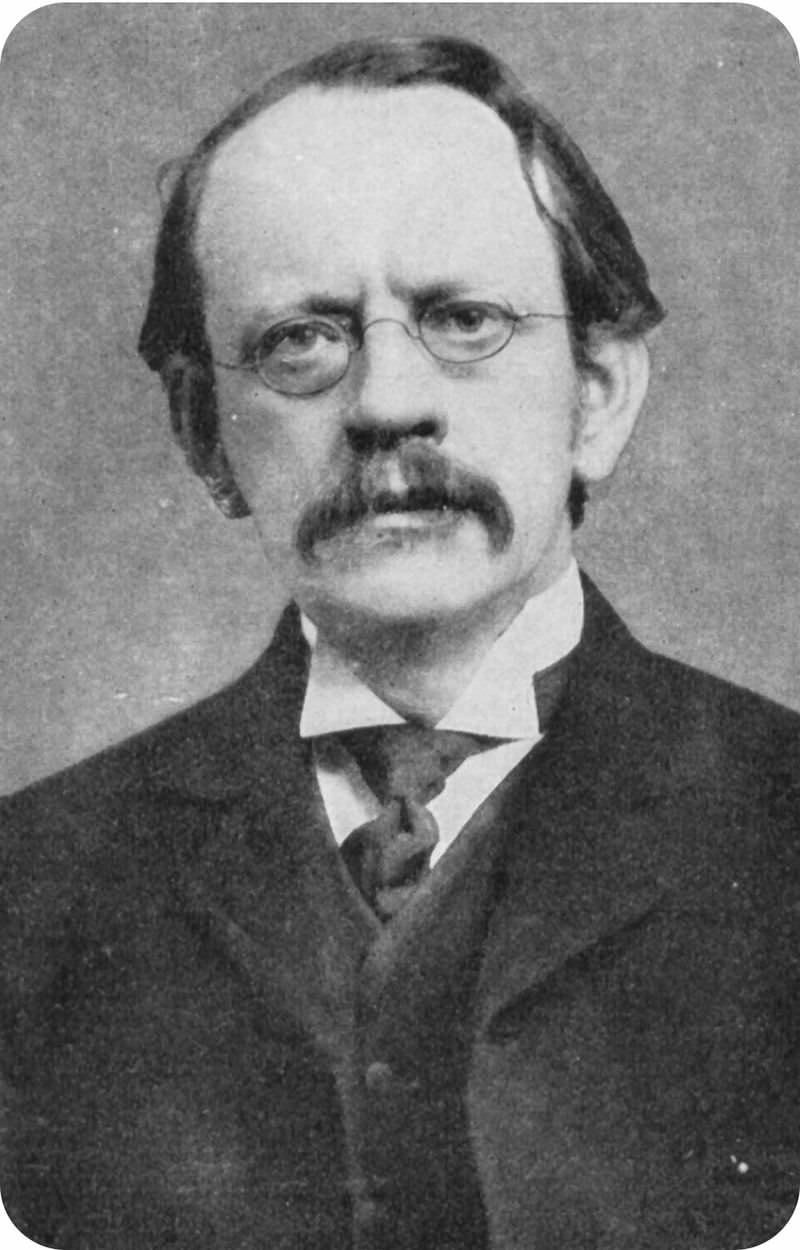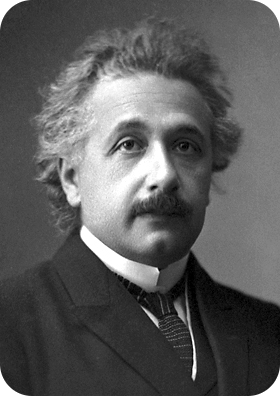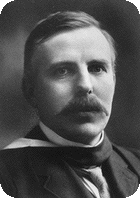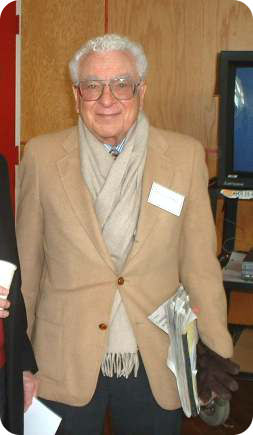基本条款
章节大纲
-
Who says scientists don’t have a sense of humor? Look at the odd names and images in this chart. Do you have any idea what they represent? Would it surprise you to learn that they represent the most fundamental particles of matter? In fact, particles with funny names like charm quarks and strange quarks make up all the matter in the universe.
::谁说科学家没有幽默感?看看这张图表中的奇特名称和图像。你是否知道它们代表着什么?你是否惊讶地知道它们代表着最基本的物质粒子?事实上,具有魅力夸克和奇怪的夸克等有趣名字的粒子构成了宇宙中的所有问题。The Search for Fundamental Particles
::寻找基本物品Scientists have long wanted to find the most basic building blocks of the universe. They asked, “what are the fundamental particles of matter that cannot be subdivided into smaller, simpler particles,” and “what holds these particles together?” The quest for fundamental particles began thousands of years ago. Scientists thought they had finally found them when John Dalton discovered the in 1803 (see the timeline in Table ). The word atom means “indivisible,” and Dalton thought that the atom could not be divided into smaller, simpler particles.
::科学家早就想找到宇宙中最基本的构件。 他们问道 , “ 无法细分为更小、更简单的粒子的物质基本粒子是什么? ” , “这些粒子又是什么? ” 数千年前就开始寻找基本粒子。 科学家们认为当约翰·道尔顿发现1803年的粒子(见表格中的时间表 ) 时,他们终于找到了这些粒子。 原子一词的意思是“不可分的 ” , 道尔顿则认为原子不能被划分为更小、更简单的粒子。Timeline of Discovery of Fundamental Particles Year Discovery 1803 John Dalton discovers the atom.
::约翰·道尔顿发现了原子1897 J.J. Thomson discovers the , the first lepton to be discovered.
::J. J. 汤姆森发现了第一颗1905 Albert Einstein discovers the photon , the first boson to be discovered.
::阿尔伯特·爱因斯坦发现了光子, 这是第一个被发现的生物。1911 Ernest Rutherford discovers the , the first particle to be discovered in the nucleus of the atom.
::Ernest Rutherford发现了 原子核中发现的第一个粒子1932 James Chadwick discovers the , another particle in the nucleus.
::James Chadwick发现了核中的另一个粒子1964 Murray Gell-Mann proposes the existence of quarks, the fundamental particles that make up protons and neutrons.
::Murray Gell-Mann提议存在夸克,即构成质子和中子的基本粒子。1964-present Through the research of many scientists, many other fundamental particles (except gravitons) are shown to exist. For almost 100 years after Dalton discovered atoms, they were accepted as the fundamental particles of matter. But starting in the late 1890s with the discovery of electrons, particles smaller and simpler than atoms were identified. Within a few decades, protons and neutrons were also discovered. Ultimately, hundreds of subatomic particles were found.
::在道尔顿发现原子近100年后的近100年里,这些原子被接受为物质的基本粒子。 但从1890年代末期开始,发现电子的粒子时发现,粒子比原子小,更简单。 在几十年内,质子和中子也被发现。 最终,发现了数百个亚原子粒子。Leptons and Quarks and Bosons, Oh My!
::莱普顿斯,夸克斯和布森斯,哦,天哪!Today, scientists think that electrons truly are fundamental particles that cannot be broken down into smaller, simpler particles. They are a type of fundamental particles called leptons. Protons and neutrons, on the other hand, are no longer thought to be fundamental particles. Instead, they are now thought to consist of smaller, simpler particles of matter called quarks. Scientists theorize that leptons and quarks are held together by yet another type of fundamental particles called bosons. All three types of fundamental particles—leptons, quarks, and bosons—are described below. The following Figure shows the variety of particles of each type.
::今天,科学家们认为,电子确实是无法细分为更小、更简单的粒子的基本粒子。它们是一种被称为的基本粒子。另一方面,质子和中子已不再被认为是基本粒子。相反,现在人们认为它们是由更小、更简单的物质粒子组成,称为夸克。科学家们认为,流子和夸克是由另一种称为boson的原始粒子结合在一起的。所有三种类型的基本粒子 -- -- 、夸克和bosons -- -- 都描述在下面。下图显示了每一种类型的粒子的种类。-
There are six types of
quarks
. In ordinary matter, virtually all quarks are of the types called up and down quarks. All quarks have mass, and they have an
electric charge
of either +2/3 or -1/3. For example, up quarks have a charge of +2/3, and down quarks have a charge of -1/3. Quarks also have a different type of charge, called color charge, although it has nothing to do with the colors that we see. Quarks are never found alone but instead always occur in groups of two or three quarks.
::有六类夸克。 在普通情况下, 几乎所有的夸克都是被调来调来调来调来调去的。 所有夸克都有质量, 它们都有+2/3或-1/3的电源。 例如, 上方的夸克有+2/3的电源, 下方的夸克有 -1/3的电源。 夸克也有不同类型的电源, 称为颜色电荷, 虽然与我们所看到的颜色无关。 夸克从未单独发现, 而是总是在两三个夸克的组合中出现 。 -
There are also six types of leptons, including electrons. Leptons have an electric charge of either -1 or 0. Electrons, for example, have a charge of -1. Leptons have mass, although the mass of electrons is extremely small.
::此外,还有六类,包括电子。 Lepton的电荷为-1或0。例如,电子的电荷为-1。Lepton的电荷为-1。Lepton有质量,尽管电子的质量极小。 -
There are four known types of bosons, which are force-carrying particles. Each of these bosons carries a different fundamental force between interacting particles. In addition, there is a particle which may exist, called the "Higgs Boson", which gives objects the masses they have. Some types of bosons have mass; others are massless. Bosons have an electric charge of +1, -1, or 0.
::有四种已知的野生动物类型,它们是强制携带的颗粒。其中每一种野生动物在相互作用的粒子之间带有不同的基本力量。此外,还可能存在一种粒子,叫做“Higgs Boson”,它给物体以质量。有些野生动物有质量;另一些则是无质量的。博生动物的电荷为+1-1或0。
Q: Protons consist of three quarks: two up quarks and one down quark . Neutrons also consist of three quarks: two down quarks and one up quark. Based on this information, what is the total electric charge of a proton? Of a neutron?
::问题:质子由三个夸克组成:两个上方的夸克和一个下方的夸克。中子也由三个夸克组成:两个下方的夸克和一个上方的夸克。根据这些信息,质子的总电费是多少?中子的总电费是多少?A: These combinations of quarks give protons a total electric charge of +1 (2/3 + 2/3 – 1/3 = 1) and neutrons a total electric charge of 0 (2/3 – 1/3 – 1/3 = 0).
::A:这些夸克组合使质子总电费为+1(2/3+2/3-1/3=1),中子总电费为0(2/3-1/3-1/3-1/3=0)。Force-Carrying Particles
::强制运输颗粒The interactions of matter particles are subject to four fundamental forces: gravity, electromagnetic force, weak nuclear force, and strong nuclear force. All of these forces are thought to be transmitted by bosons, the force-carrying fundamental particles. The different types of bosons and the forces they carry are shown in Table . Consider the examples of gluons, the bosons that carry the strong nuclear force. A continuous exchange of gluons between quarks binds them together in both protons and neutrons. Note that force-carrying particles for gravity (gravitons) have not yet been found.
::物质粒子的相互作用受到四大基本力量的制约:重力、电磁力、弱核力量和强核力量。 所有这些力量都被认为都是由布尔森、携带武力的基本粒子传播的。 表格中显示了不同类型的布尔森和它们携带的力量。 想想带强大核力量的巨石。 夸克之间不断交换葡萄球将质子和中子结合在一起。 注意重力( 重力) 携带的粒子尚未被发现 。Bosons and Fundamental Forces Type of Bosons Fundamental Force They Carry Particles They Affect Distance over Which They Carry Force Gluons strong nuclear force quarks only within the nucleus W bosons
::WZ bosons
::Z 波子weak nuclear force leptons and quarks only within the nucleus Photons electromagnetic force leptons and quarks all distances Gravitons (hypothetical) force of gravity leptons and quarks all distances Q: Which type of boson carries force between the negative electrons and positive protons of an atom?
::问题:什么型号的boson在负电子和原子正质子之间携带力量?A: Photons carry electromagnetic force. They are responsible for the force of attraction or repulsion between all electrically charged matter, including the force of attraction between negative electrons and positive protons in an atom.
::A:光子带有电磁力。它们负责在所有电荷物质之间产生吸引力或击退力,包括负电子和原子中正质子之间的吸引力。Q: Gravitons have not yet been discovered so they have only been hypothesized to exist. What evidence do you think leads scientists to think that these hypothetical particles affect both leptons and quarks and that they carry force over all distances?
::问题:重力尚未被发现,所以它们只是假设存在而已。你认为哪些证据能让科学家们认为这些假设的粒子既影响,也影响,并且具有各种距离的威力?A: Gravity is known to affect all matter that has mass, and both quarks and leptons have mass. Gravity is also known to work over long as well as short distances. For example, Earth’s gravity keeps you firmly planted on the ground and also keeps the moon orbiting around the planet.
::A:已知重力会影响所有有质量的物质,而夸克和都有质量。 重力也会长而短地工作。 比如,地球的重力使你牢牢地埋在地面上,并使月亮绕着地球运行。The Standard Model
::《标准示范公约》Based on their knowledge of subatomic particles, scientists have developed a theory called the standard model to explain all the matter in the universe and how it is held together. The model includes only the fundamental particles in the Table . No other particles are needed to explain all kinds of matter. According to the model, all known matter consists of quarks and leptons that interact by exchanging bosons, which transmit fundamental forces. The standard model is a good theory because all of its predictions have been verified by experimental data. However, the model doesn’t explain everything, including the force of gravity and why matter has mass. Scientists continue to search for evidence that will allow them to explain these aspects of force and matter as well.
::根据对亚原子粒子的知识,科学家们开发了一种理论,称为标准模型,以解释宇宙中的所有物质及其如何相互连接。模型只包括表中的基本粒子。不需要其他粒子来解释所有类型的物质。根据模型,所有已知物质都由通过交换原始力量而相互作用的巨石和组成。标准模型是一个良好的理论,因为它的所有预测都得到了实验数据的验证。然而,模型并没有解释一切,包括引力和物质为何具有质量。科学家们继续寻找证据,以便解释这些力量和物质的这些方面。Launch the simulation below to learn more about the variety of fundamental particles discovered around the world over the last century. The simulation is presented like a zoo map with three major areas: the lepton safari, the boson pond, and the hadron forest. Have fun exploring the Particle Zoo:
::模拟在下面启动, 以了解上个世纪在世界各地发现的 各种基本粒子。 模拟像动物园地图一样展示了三大领域: lepton 狩猎、 boson 池塘、 和 hadron 森林。 探索Particle Zoo 愉快 :Summary
::摘要-
For centuries, scientists searched for the fundamental particles of matter and the “glue” that holds them together. At first, scientists thought that atoms were the fundamental particles. Now they know that there are smaller, simpler particles than atoms that make up matter and carry the forces that hold matter together.
::几个世纪以来,科学家一直在寻找物质的基本粒子和将它们联系在一起的“胶质 ” 。 起初,科学家认为原子是基本粒子。 现在,他们知道有比原子更小、更简单的粒子组成物质并携带将物质联系在一起的力量。 -
Protons and neutrons are made up of fundamental particles of matter called quarks. Electrons are another type of fundamental particles of matter called leptons. Bosons are fundamental particles that carry forces between fundamental particles of matter.
::质子和中子由物质的基本粒子组成,称为夸克。电子是另一种物质的基本粒子,称为。波森是基本粒子,在物质的基本粒子之间携带力量。 -
Scientists think that a different type of boson carries each of the four fundamental forces in the universe (strong and weak nuclear forces, electromagnetic force, and gravity).
::科学家们认为,另一种型态的boson携带着宇宙中四种基本力量(强弱核力量、电磁力量和重力)中的每一种力量。 -
The standard model is a simple theory that explains all the matter in the universe and its interactions (except for the mass of matter and the force of gravity). According to the standard model, all known matter consists of quarks and leptons, which interact by exchanging force-carrying particles called bosons.
::标准模型是一个简单的理论,可以解释宇宙中的所有物质及其相互作用(物质质量和重力除外 ) 。 根据标准模型,所有已知物质都由夸克和组成,它们通过交换称为bosons的载力粒子相互作用。
Review
::回顾-
Outline the order in which fundamental particles were discovered.
::描述发现基本粒子的顺序 。 -
Make a table comparing and contrasting the three types of fundamental particles. Include an example of each type in your table.
::比较和对比三种基本粒子的表格。 在表格中包含每种类型的示例 。 -
Make a two- or three-dimensional model of a hydrogen atom (1 proton and 1 electron) that represents all of its fundamental particles, including force-carrying particles.
::制作一个氢原子(1质子和1电子)的二维或三维模型,代表其所有基本颗粒,包括载力颗粒。 -
What is the standard model? In what ways is it incomplete?
::标准模式是什么?它以什么方式不完整?
-
There are six types of
quarks
. In ordinary matter, virtually all quarks are of the types called up and down quarks. All quarks have mass, and they have an
electric charge
of either +2/3 or -1/3. For example, up quarks have a charge of +2/3, and down quarks have a charge of -1/3. Quarks also have a different type of charge, called color charge, although it has nothing to do with the colors that we see. Quarks are never found alone but instead always occur in groups of two or three quarks.

